Driving the White Villages Route through Andalusia might just be the best way to soak up the area’s charm, history, and jaw-dropping views. The Pueblos Blancos, or white villages, perch on hillsides across southern Spain, their whitewashed walls popping against rugged terrain.
Each village—Arcos de la Frontera, Olvera, Grazalema, and more—brings its own vibe. Still, they all share winding streets, sunny plazas, and stunning vistas that made me stop way more often than I expected.
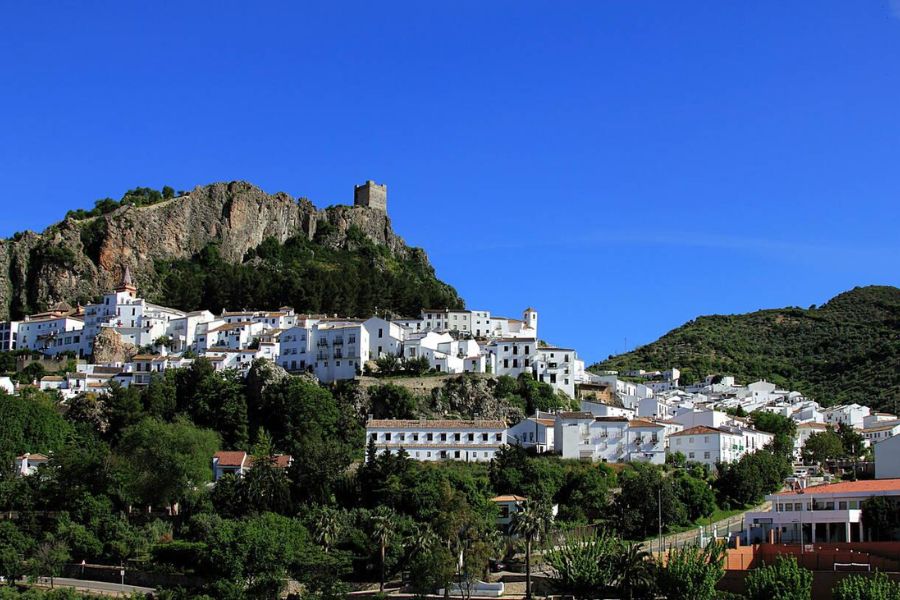
As soon as I left the main highways, narrow roads pulled me through rolling hills and endless olive groves, linking a string of these dreamy towns. Exploring by car gave me the freedom to chase highlights at my own pace—grabbing coffee in a sleepy plaza, or just pulling over for yet another photo.
If you want to slow down and really dive into some of Andalusia’s most scenic and authentic corners, this route is a winner.
Mapping the White Villages Route: Planning a Perfect Journey
Driving the White Villages Route takes you through tiny towns with whitewashed houses, twisty roads, and epic hilltop views. Picking the right route, figuring out how to get around, and timing your visit for good weather all make a big difference.
Navigating Andalusia’s Hilltop Gems
The White Villages, or Pueblos Blancos, stretch across Andalusia between Cadiz and Malaga. Towns like Arcos de la Frontera, Grazalema, Zahara de la Sierra, and Ronda stand out, each with its own flavor.
I found starting from Seville or Malaga worked best. Both cities offer solid car rental options and public transport, so getting started felt easy.
As I followed the winding roads, I relied on both a physical map and a GPS app—cell service dropped out in some places. Many villages perch on steep hills, often at sharp bends or after a scenic climb.
Parking usually meant squeezing into tight spots just outside the town centers, then walking in. Honestly, I didn’t mind—it gave me a chance to stretch my legs and take in the scenery.
Optimal Routes and Transport Options
I’d go for a loop route if you want more variety and less backtracking. A popular loop is: Seville → Arcos de la Frontera → Grazalema → Zahara de la Sierra → Olvera → Ronda → Malaga.
This path covers the best villages and landscapes. You can reverse it if you’re starting from Granada or Malaga.

Transport tips:
- Driving: Renting a car really is the best way. You get to stop when you want—whether it’s for photos, food, or just to wander.
- Buses: Regional buses link some towns, but schedules can be spotty, especially on weekends.
- Guided Tours: You’ll find day tours from Seville and Malaga, but they’re less flexible.
Some roads wind and narrow through the mountains. I slowed down and stayed alert, especially on the tightest bends.
I made sure to fill up on gas in bigger towns like Ronda or Arcos before heading out to the smaller villages.
Best Times to Visit For Ideal Climate
Andalusia’s climate really shapes the whole trip. Spring (March to May) and fall (September to November) bring the best weather—not too hot, plenty of sun, and breezy afternoons.
I visited in late April and loved the wildflowers and perfect walking weather.
Summer (June to August) gets seriously hot, sometimes hitting 35°C (95°F). Some villages slow down in the heat, and climbing those steep streets can get tough fast.
Winter stays mild for Europe, but it rains more, and higher villages like Grazalema can feel chilly.
Here’s a quick look at average highs:
| Month | Arcos | Ronda | Grazalema |
|---|---|---|---|
| April | 22°C | 20°C | 18°C |
| August | 34°C | 32°C | 29°C |
| November | 18°C | 17°C | 15°C |
I packed a hat, sunscreen, and a few layers for cool mornings and warm afternoons. Spring and autumn also mean fewer crowds—so you can get a better feel for real local life.
Must-See White Villages: Highlights and Hidden Gems
Every stop along the White Villages Route brings something different, from cliffside towns with deep history to peaceful escapes surrounded by wild nature.
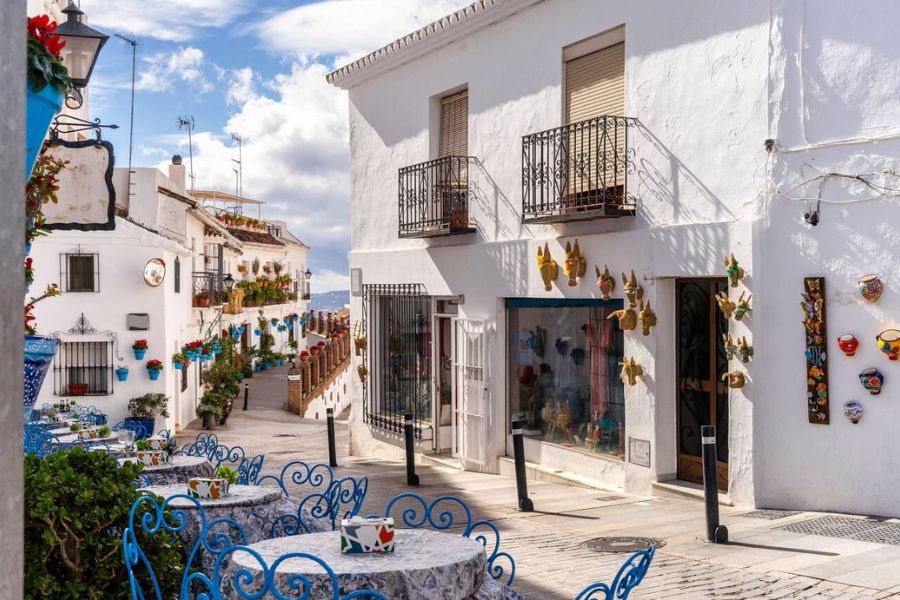
My journey blended famous sights with quiet backroads, giving me both postcard moments and a few surprises.
Arcos de la Frontera: The Gateway to the Pueblos Blancos
Rolling into Arcos de la Frontera, I felt like I’d stumbled into a living postcard. The village perches on a dramatic cliff above the Guadalete River, packed with whitewashed houses, bright flower pots, and winding streets leading up to a killer viewpoint.
Cobbled lanes in the old town guide you to places like Plaza del Cabildo, where I stood at the edge of a sheer drop, just soaking in the valley below.
At the top, Santa María Church and the Parador de Arcos give even more stunning views. Arcos also has friendly tapas bars and a laid-back pace, making it a great intro to Andalusia’s white villages.
| Highlights | Details |
|---|---|
| Plaza del Cabildo | Main square with cliffside views |
| Santa María Church | Gothic-Mudejar architecture, perched at the top |
| Tapas Bars | Local dishes and lively atmosphere |
Ronda: Bridging History and Breathtaking Vistas
Ronda felt like a world apart. The town’s famous for Puente Nuevo, the 18th-century stone bridge spanning a wild gorge—I found it totally unforgettable at sunset.
From the edge, I gazed across the El Tajo gorge, with green fields rolling into the hills.
Wandering Ronda’s old core, I got lost in its bullring (one of Spain’s oldest) and strolled the city walls. Moorish and Spanish influences mix everywhere, especially in the lively alleys and pretty squares.
Ronda’s bigger than the other pueblos blancos, but if you wander off the main streets, it gets quiet fast.
Must-see spots in Ronda:
- Puente Nuevo
- Plaza de Toros
- Old-town streets
- Gardens of Casa Don Bosco
Grazalema & Sierra de Grazalema: Nature’s Playground
Driving up the mountain roads to Grazalema was a highlight. The village sits inside the gorgeous Sierra de Grazalema Natural Park, surrounded by some of southern Spain’s greenest, wildest landscapes.
I woke up to crisp mountain air and spent my days hiking through cork oak forests, wildflower meadows, and rocky peaks.
Grazalema gets more rain than most places in Spain, which explains those bright green hills. The village itself has classic white walls, red-tiled roofs, and quiet plazas.

I tried local payoyo cheese (so good!) and took the scenic route to Zahara de la Sierra for epic views.
Activities in Grazalema and Sierra de Grazalema:
- Hiking to Salto del Cabrero
- Stopping at mountain viewpoints
- Sampling local cheese and honey
Zahara de la Sierra, Ubrique, and El Bosque: Off-the-Beaten-Path Charms
Some of my favorite moments happened in the quieter villages. Zahara de la Sierra stands out with its castle ruins above a turquoise reservoir—climbing up there rewards you with wild views of mountains and water.
The village tumbles down the hillside, and every level has a different view.
Ubrique shows a different side of Andalusia, famous for leathercraft and way less touristy. I poked around a few leather workshops and found the vibe super authentic.
El Bosque sits at the forest’s edge, where hiking trails begin. It’s especially peaceful in late afternoon. Birdwatchers and hikers love it for easy access to park trails and riverside walks.
Hidden Gems List:
- Zahara’s hilltop castle and reservoir views
- Ubrique’s artisan leather shops
- El Bosque’s hiking trails and riverside paths
Natural Beauty and Adventure in the Pueblos Blancos
Andalusia’s white villages sit among mountains, deep canyons, shady forests, and winding rivers. If you love the outdoors, you’ll find plenty of ways to connect with the landscape—on foot, by car, or just by soaking in the views.
Hiking and Outdoor Activities
Hiking quickly became my favorite way to experience the Pueblos Blancos. Many villages perch on hills, and narrow paths lead up into the mountains.
Grazalema, for example, has thick pine forests and dramatic peaks. Marked trails suit all levels, from gentle walks between villages to tougher hikes up rocky slopes.
Biking’s big here too. I met cyclists riding the scenic route linking these towns.
For climbers and birders, the Sierra de Grazalema Natural Park offers cliffs, caves, and rare birds. I spotted griffon vultures soaring overhead more than once.

If you’re into water, kayaking or swimming in the rivers adds a cool twist. There aren’t big beaches, but some riversides feel almost as refreshing. In spring, wildflowers light up the fields, making every walk and ride even better.
Garganta Verde and Scenic Landscapes
One of the best parts of my trip was exploring the Garganta Verde canyon. This limestone gorge near Zahara de la Sierra cuts deep through the landscape, lined with lush greenery.
It’s part of a protected park, and the main trail leads to a viewpoint with breathtaking panoramas.
The silence there, broken only by birds, felt almost sacred.
The hike down into the gorge is tough but so worth it. The contrast between emerald forests and pale stone is stunning. Sometimes, morning mist hangs on the cliffs, adding a touch of mystery.
This spot is perfect for anyone who loves wild places and dramatic views.
Access is limited to protect wildlife, so you need to book ahead, especially during busy months. Guided hikes are available and honestly, they’re a good idea—the terrain gets tricky after rain.
Exploring Forests, Rivers, and Wildlife
Walking through the forests around Grazalema and El Bosque, I felt totally removed from city life. Towering oaks and pines make for a cool, shady escape from the Spanish sun.
I found plenty of marked trails, great for spotting wildlife—think mountain goats, deer, and if you’re really lucky, the Iberian lynx.
Rivers crisscross the region, with footbridges and picnic spots along the banks. The Guadalete River winds past meadows, and it’s a nice place for a quiet break.
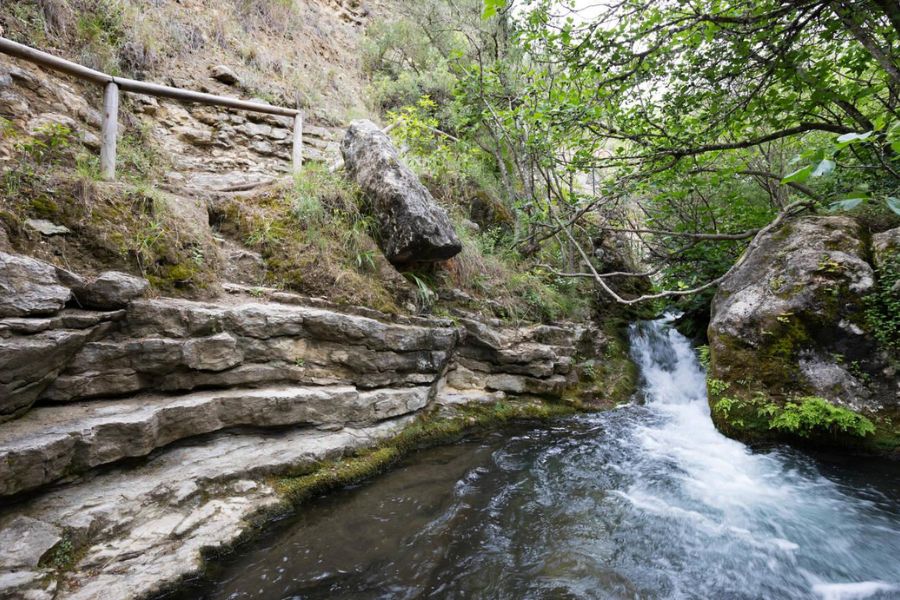
Some villages even have little waterfalls in spring, hidden along quiet trails.
I tried to pause often, just listening to the water and the birds. The mix of mountains, green forests, and clear streams reminded me why Andalusia’s natural beauty sticks with you long after you leave.
Culture, History, and Artistic Inspiration
Time seems to slow down as I wander through these whitewashed villages. Every corner reveals a new layer of history, artistic touches, and a local culture that’s still very much alive.
Legends and Stories From Centuries Past
Walking through these hilltop towns, I kept running into reminders of their long, tangled past. Many villages, like Ronda and Grazalema, still show the Moorish influence in their maze-like streets and old fortress walls.
Every village has its own stories. In Arcos de la Frontera, locals talk about forbidden love between Christian knights and Moorish princesses. Some legends even hint at treasures lost during the Reconquista.
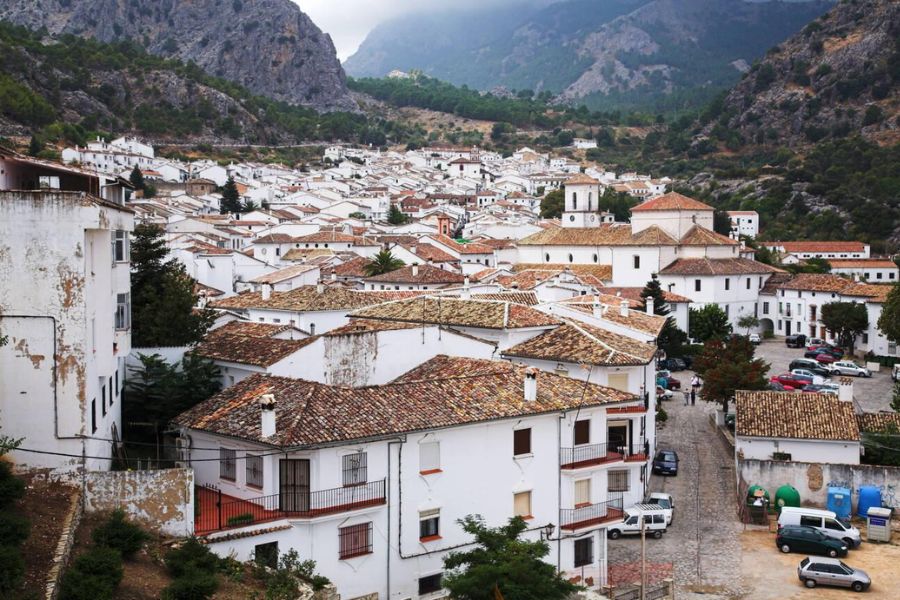
People share these tales with real pride, keeping traditions alive in lively tapas bars and quiet plazas. These legends add depth to every view and help visitors like me connect with Andalusia’s layered history.
Cultural Heritage and Local Traditions
The Pueblos Blancos aren’t just beautiful—they buzz with customs families have handed down for generations.
Weekly markets pop up with crafts, food, and handmade ceramics. You can see how farming and trading have shaped the region’s heritage.
Spring festivals? The towns explode with color. Locals slip into traditional flamenco dresses, dance sevillanas in the plazas, and string flowers along the streets.
These moments really show off Andalusia’s warm, social spirit.
I honestly think the best way to explore the culture here is by tasting it. Dishes like salmorejo and payoyo cheese are local favorites, and people usually share them around packed communal tables, swapping stories.
Art, Poetry, and Surrealism in the Villages
Artists and writers flock to these villages. Dramatic views and winding alleys have sparked inspiration for painters from the romantic era right up to today.
The surreal landscapes near Ronda even drew Salvador Dalí and others who loved blending dreams with reality.
Poetry thrives here too. Local poets write about the sharp hills, the white walls, and the ever-changing Andalusian sky.
Some cafes hang art or host open mic readings that stretch late into the night. Everyone gets a chance to join in.
As I walk through these towns, it’s obvious why creative souls feel at home. Light bounces off painted walls, and every narrow path feels like a living canvas.
Sacred Spaces and Cave Houses
Sacred sites run through village life. Small chapels, former Moorish mosques turned churches, and hillside shrines offer quiet spots for reflection.
Many still hold weekly services or tiny local festivals. I stumbled into one during my trip, and it felt like stepping back in time.
Some villages, like Setenil de las Bodegas, have homes and shops carved right into the rocky cliffs. Locals call these “cave houses.” They stay cool in summer and cozy in winter, showing off the creative ways people here adapt to their land.

Whenever I stepped into an old church or ducked into a shaded cave home, I felt the mix of faith, tradition, and cleverness that makes these villages so special.
Flavors and Local Life: Gastronomy and Village Markets
The white villages of Andalusia are a real feast for the senses.
You’ll find homemade flavors, lively markets, and a strong tie to the land and sea. Meals here come straight from tradition, and every bite tells its own story.
Traditional Cuisine and Local Delicacies
Eating my way through the Pueblos Blancos was honestly a highlight.
Each town surprised me with new flavors. From rich rabo de toro (oxtail stew) to chilled, thick salmorejo, there was always something different.
I found creamy, nutty payoyo cheese, usually made with milk from goats grazing on the nearby hills.
The olives here are something else—served as snacks, pressed into oil, and tossed into almost every dish.
On cool mornings, I’d dip churros in thick chocolate. If I had room, I’d finish with bienmesabe, an almond dessert that’s unique to some villages.
Restaurants stick to recipes passed down for generations. Ingredients are simple, fresh, and usually come from nearby farms.
Local wines—especially the whites and sherries—just taste better under the Andalusian sun.
Village Markets and Artisan Products
Markets in these hilltop villages pulse with daily life.
I wandered through stalls stacked with colorful produce, local cheeses, cured jamón, and jars of honey. Farmers and artisans greeted me with pride, always happy to talk about their goods.
Handcrafted pottery and woven baskets caught my eye. Families have been making these for centuries.
The vibe is warm and lively. Bargaining feels more like friendly banter, and every purchase supports a local craft.
I made sure to taste olives from ancient groves and flour ground at local stone mills.

Before leaving, I stuffed my bag with regional soaps scented with wild herbs and a loaf of bread as rustic as the villages themselves.
Fisheries, Agriculture, and Natural Resources
Driving between villages, I passed olive groves, vineyards, and fields of sunflowers rolling over the hills.
Families have worked these lands for generations. The rocky, rich soil grows olives, grapes, and grain.
Some towns sit closer to the coast, so anchovies, sardines, and cuttlefish show up on menus—caught fresh in the early morning by small fisheries.
They grill seafood with just olive oil and lemon. It’s simple, but so good.
I also learned about local limestone quarries and small mines in the hills. These places shaped the region’s history.
Almond and citrus plantations dot the landscape, and agriculture still sits at the heart of village life.
That deep connection to nature runs through every meal and market, making each visit feel meaningful and full of character.
Travel Insights: Practical Tips and Unforgettable Memories
Getting ready for the White Villages Route really made my Andalusian road trip smoother and way more memorable.
From packing smart for the region’s wild weather to hunting for the best photo spots and building real connections, these little things shaped my trip in ways I didn’t expect.
Packing and Preparation for Your Adventure
Before hitting the road through the Pueblos Blancos, I checked the seasonal weather.
Spring meant cool mornings and warm afternoons, while fall brought crisp nights. I packed a light jacket, breathable shirts, and sturdy walking shoes for those steep cobblestone streets.
A small backpack held my essentials—reusable water bottle, snacks, and sunscreen.
Renting a compact, comfy car was a lifesaver since village roads can get narrow and twisty.
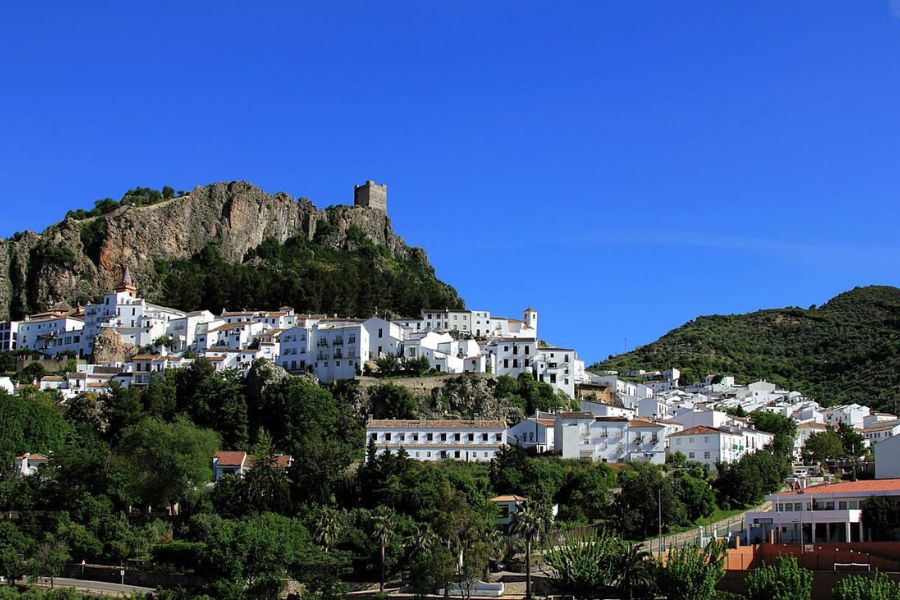
I loaded offline maps on my phone in case the Wi-Fi vanished between towns like Ronda and Vejer de la Frontera.
I carried euros in cash for small restaurants and markets, since cards didn’t always work. That made it easy to grab local cheese or olives on the go.
As a U.S. traveler, I didn’t need a visa for Spain, but I checked requirements anyway—especially with Morocco and Gibraltar so close.
Photography and Picture-Perfect Moments
Photographing the White Villages felt like stepping into a dream.
Early morning and just before sunset gave the best light—the white buildings seemed to glow against the rugged hills.
I found great vantage points from Zahara de la Sierra’s walls and Grazalema’s winding alleys.
Quick photo breaks helped me catch details: flower pots on balconies, hand-painted tiles, or donkeys wandering past old stone arches.
I always asked before taking close-up photos of locals, just to respect their privacy and maybe make a new friend.
A small tripod fit in my bag for steady dusk shots, and I packed extra batteries so I never missed a moment on those winding drives.
Sometimes rain would roll in from the Atlantic, so a weatherproof camera cover came in handy.
Keeping my gear simple let me focus on the moment, not just the photos.
From mineral-rich cliffs to calm valley harbors, every scene added another layer to my journey.
Local Connections and Sustainable Tourism
One of the best moments? I chatted with locals at village squares and cozy cafes—some folks seemed genuinely excited to share stories about their town’s past or point me toward hidden viewpoints.
I joined a walking tour in Arcos de la Frontera, led by a resident guide. That really gave me a feel for the village’s history and what daily life looked like there.
I made a point to buy olive oil, ceramics, and woven scarves from shops run by local families. Those little purchases actually helped people who live there.
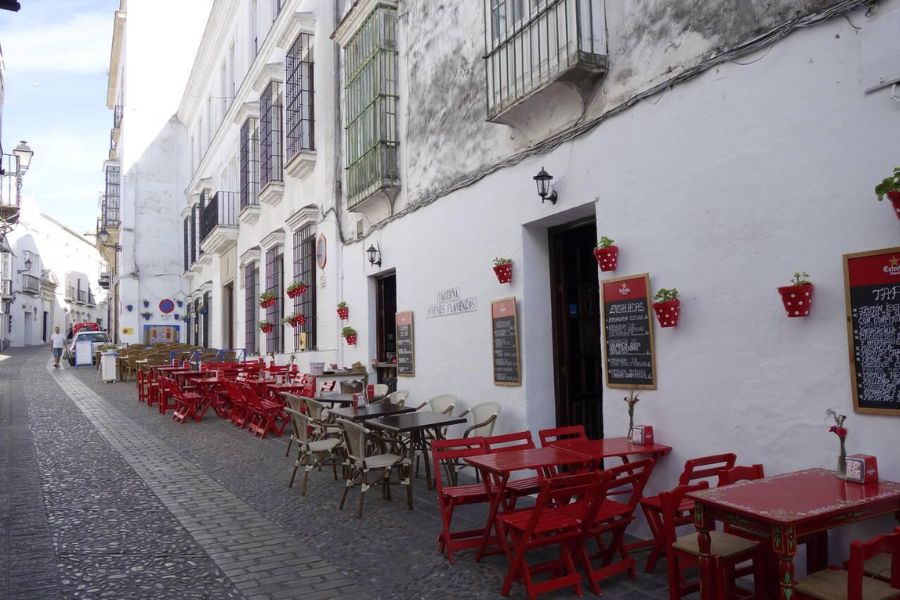
Instead of booking a big hotel, I stayed in family-run guesthouses. That way, my money went directly into the community.
Before the trip, I checked out some responsible travel tips for southern Spain. The University of California Press had some solid guides about Andalusia’s culture and environment.
I tried to respect the land—used a refillable water bottle, recycled when I could, and just paid attention to my impact. Honestly, those small choices and the real connections along the way made the whole journey feel more meaningful.

